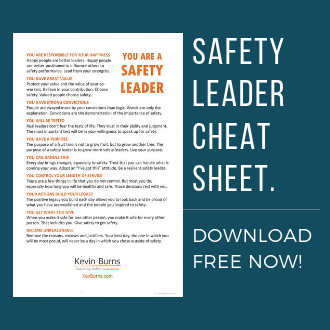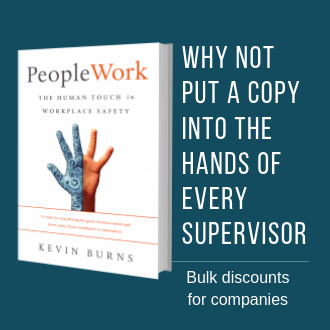Hearts and Minds in Safety
When the information doesn't sink in
Do you ever find yourself wondering what more you have to say to get your crews to consistently do safety right? Well, the answer might be easier than you think. Say less.
Safety people and front-line supervisors spend nearly 80% of their time in communications of some form. Most of that is spent just putting information in front of their people. But much of that information doesn't sink in, and there is a very good reason for that. Because information on its own doesn't move people or inspire or motivate them.
Are you engaging in Corporate Karaoke?
Let me explain. You can’t just keep throwing information at your people and hoping something sticks. You fill your safety meetings full of stats and figures. You treat your PowerPoint slides as the script that you will read along with, with your back turned, at one-third of the speed your people can read it for themselves. You call it information. They call it Corporate Karaoke.
Most of the information you bring to your meetings probably isn’t even necessary. You’re using it to fill time. And for every word you use makes it harder for your people to separate the important stuff from the “filler” stuff.
Instead, what you need to do is to do something that moves your people. Your real job with communications is to appeal to your people at a level where you connect with both hearts and minds.
Hearts and minds
 There's plenty of talk in the safety world about hearts and minds. You say you want to get to your people in both places but all you ever seem to do is appeal to their minds. And you do it by overusing information to fill time and space.
There's plenty of talk in the safety world about hearts and minds. You say you want to get to your people in both places but all you ever seem to do is appeal to their minds. And you do it by overusing information to fill time and space.
Check-boxes and statistics do not appeal to the heart. Rules and regulations do not appeal to the heart. Process and procedure do not appeal to the heart. Legislation and consequence do not appeal to the heart. So, what’s left? One-on-one with a supervisor or safety person that seems to genuinely care. Moments that matter.
Not PowerPoint slides of LTI and TRIF rates. Seriously, stop doing that. Every time you do it you widen the gap between hearts and minds. Don't burden your front-line people with stats and backroom information. That’s not what gets good people out of bed in the morning motivated to want to give their best.
You have to appeal to their hearts. Make the things you share in words matter. And it’s scary, messy work if the thought of allowing yourself to be vulnerable terrifies you.
Be like the best boss you ever had
The best boss you ever had probably never forced you to sit through Corporate Karaoke meetings while he or she read everything they wanted to say to you from a PowerPoint slide. No, the best boss you ever had took time to sit with you one-on-one, and look you in the eye, and challenge you to stretch yourself a little more. They made you feel important and valued. They inspired you to want to do better, to give more, to motivate yourself. And they did it by connecting with you at a heart level.
So, now, you throw your people in front of a PowerPoint screen and expect them to be motivated, inspired and to stretch themselves? Hardly. You overload them with information, and they feel weighted down. It’s hard to be motivated when you feel like the weight of the load is increasing.
Information overload is the worst way of rallying employees and building motivation.
 Your people care more about connection, and meaning, and purpose, and accomplishing things that matter. All of the quality workplace research and surveys support that. So, help your team buy-in to your vision for safety. Make working on your team mean something.
Your people care more about connection, and meaning, and purpose, and accomplishing things that matter. All of the quality workplace research and surveys support that. So, help your team buy-in to your vision for safety. Make working on your team mean something.
Don’t focus on numbers. Numbers only matter to department heads. What’s most important is caring about how your good people are doing today – making them feel valued. That connects at the heart level.
If you can make yours a workplace where your people buy-in to your vision for the workplace, then that’s a place where they will want to come back to work tomorrow. And, when your people want to come back to work, you’ve got their hearts. Once you’ve got their hearts, you will get their focus on safety.
--
Kevin Burns helps organizations crush safety complacency and get employee buy-in. He is the author of PeopleWork: The Human Touch in Workplace Safety.
Find out more about beating complacency and improving employee buy-in at the new www.kevburns.com


